#Curiosity Rover
Explore tagged Tumblr posts
Text

Clearest image ever taken of Mars' North Pole. Yes that's water ice.
Fonte: X
348 notes
·
View notes
Text

158 notes
·
View notes
Text
(UPDATED W PHOTOS) NASA's Curiosity rover ran over a rock and found crystals inside! They're pure sulfur. Elemental sulfur is something we've never seen before on Mars. We don't know much about these yellow crystals yet, but the team is already at work to figure it out!





#nasa cassi#curiosity rover#curiosity#astronomy#nasa#astronomers#universe#nasa photos#astrophotography#outer space#astrophysics#nasawebb#hubble space telescope#international space station#space travel#planetary science#science facts#nasa science#space science#space program#space exploration#space#science#our universe#solar system#exoplanet#astronomy facts#nasa astronauts#planetary nebula#the universe
294 notes
·
View notes
Text
Mars Planet by Curiosity Rover, 2024
352 notes
·
View notes
Text


Sagan Station, Mars "Terra Prime"
#Star Trek Enterprise#Enterprise#Terra Prime#Shuttlepod#Sagan Station#Mars#Carl Sagan#Curiosity Rover#Mars Rover#entedit#enterpriseedit#startrekedit#startrekdaily#tvedit#scifiedit#00sedit#ent s4#4.21#GIF#my gifs#Secret Enterprise Rewatch#Hide and Queue
101 notes
·
View notes
Photo

This Zenith Movie was taken on Sol 1222 (2016-01-13) at approximately 9:52 LTST and a solar longitude of 94.64°. (What is this?)
337 notes
·
View notes
Text
My Roman empire is the fact that NASA uses pirate-ninjas instead of kilowatt-hour-per-sol for the Curiosity rover; adapted from Andy Weir's The Martian.
31 notes
·
View notes
Text
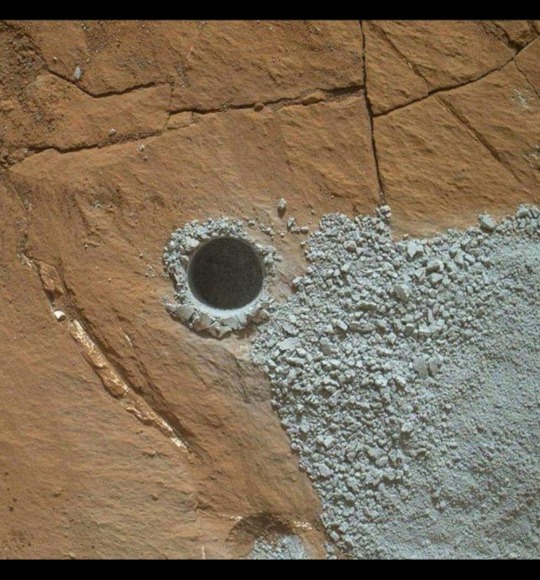
A hole drilled on Mars by Curiosity Rover, one of 36 holes drilled.
#Mars#martian#curiosity#curiosity rover#nasa#space exploration#space#outer space#science#nasa jpl#Jet Propulsion Laboratory#astronomy#perseverance rover#mars mission#Ingenuity#jezero#explore mars#space craft#2001#martian surface#phobos#deimos#mars landing
56 notes
·
View notes
Text
A decade after the release of ‘The Martian’ and a decade out from the world it envisions, a planetary scientist checks in on real-life Mars exploration
by Ari Koeppel, Postdoctoral Scientist in Earth and Planetary Science, Dartmouth College
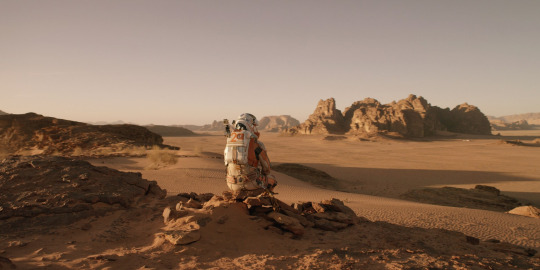
Andy Weir’s bestselling story “The Martian” predicts that by 2035 NASA will have landed humans on Mars three times, perfected return-to-Earth flight systems and collaborated with the China National Space Administration. We are now 10 years past the Hollywood adaptation’s 2015 release and 10 years shy of its fictional timeline. At this midpoint, Mars exploration looks a bit different than how it was portrayed in “The Martian,” with both more discoveries and more controversy.
As a planetary geologist who works with NASA missions to study Mars, I follow exploration science and policy closely. In 2010, the U.S. National Space Policy set goals for human missions to Mars in the 2030s. But in 2017, the White House Space Policy Directive 1 shifted NASA’s focus toward returning first to the Moon under what would become the Artemis program.
Although concepts for crewed missions to Mars have gained popularity, NASA’s actual plans for landing humans on Mars remain fragile. Notably, over the last 10 years, it has been robotic, rather than crewed, missions that have propelled discovery and the human imagination forward.
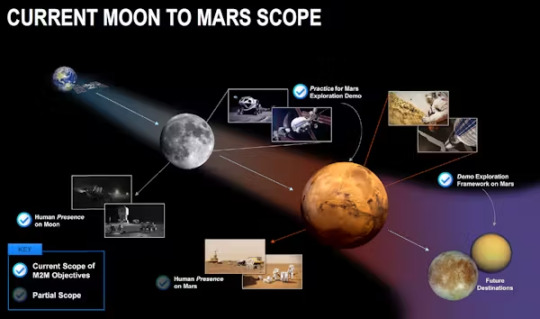
NASA’s 2023 Moon to Mars Strategy and Objectives Development document lays out the steps the agency was shooting for at the time, to go first to the Moon, and from there to Mars. NASA
Robotic discoveries
Since 2015, satellites and rovers have reshaped scientists’ understanding of Mars. They have revealed countless insights into how its climate has changed over time.
As Earth’s neighbor, climate shifts on Mars also reflect solar system processes affecting Earth at a time when life was first taking hold. Thus, Mars has become a focal point for investigating the age old questions of “where do we come from?” and “are we alone?”
The Opportunity, Curiosity and Perseverance rovers have driven dozens of miles studying layered rock formations that serve as a record of Mars’ past. By studying sedimentary layers – rock formations stacked like layers of a cake – planetary geologists have pieced together a vivid tale of environmental change that dwarfs what Earth is currently experiencing.
Mars was once a world of erupting volcanoes, glaciers, lakes and flowing rivers – an environment not unlike early Earth. Then its core cooled, its magnetic field faltered and its atmosphere drifted away. The planet’s exposed surface has retained signs of those processes ever since in the form of landscape patterns, sequences of layered sediment and mineral mixtures.

Layered sedimentary rocks exposed within the craters of Arabia Terra, Mars, recording ancient surface processes. Photo from the Mars Reconnaissance Orbiter High Resolution Imaging Science Experiment. NASA/JPL/University of Arizona
Arabia Terra
One focus of scientific investigation over the last 10 years is particularly relevant to the setting of “The Martian” but fails to receive mention in the story. To reach his best chance of survival, protagonist Mark Watney, played by Matt Damon, must cross a vast, dusty and crater-pocked region of Mars known as Arabia Terra.
In 2022 and 2023, I, along with colleagues at Northern Arizona University and Johns Hopkins University, published detailed analyses of the layered materials there using imagery from the Mars Reconnaissance Orbiter and Mars Odyssey satellites.
By using infrared imagery and measuring the dimensions of surface features, we linked multiple layered deposits to the same episodes of formation and learned more about the widespread crumbling nature of the terrain seen there today. Because water tends to cement rock tightly together, that loose material indicates that around 3.5 billion years ago, that area had a drying climate.
To make the discussions about this area easier, we even worked with the International Astronomical Union to name a few previously unnamed craters that were mentioned in the story. For example, one that Watney would have driven right by is now named Kozova Crater, after a town in Ukraine.
More to explore
Despite rapid advances in Mars science, many unknowns remain. Scientists still aren’t sure of the precise ages, atmospheric conditions and possible signatures of life associated with each of the different rock types observed on the surface.
For instance, the Perseverance rover recently drilled into and analyzed a unique set of rocks hosting organic – that is, carbon-based – compounds. Organic compounds serve as the building blocks of life, but more detailed analysis is required to determine whether these specific rocks once hosted microbial life.
The in-development Mars Sample Return mission aims to address these basic outstanding questions by delivering the first-ever unaltered fragments of another world to Earth. The Perseverance rover is already caching rock and soil samples, including ones hosting organic compounds, in sealed tubes. A future lander will then need to pick up and launch the caches back to Earth.
youtube
Once home, researchers can examine these materials with instruments orders of magnitude more sensitive than anything that could be flown on a spacecraft. Scientists stand to learn far more about the habitability, geologic history and presence of any signs of life on Mars through the sample return campaign than by sending humans to the surface.
This perspective is why NASA, the European Space Agency and others have invested some US$30 billion in robotic Mars exploration since the 1960s. The payoff has been staggering: That work has triggered rapid technological advances in robotics, telecommunications and materials science. For example, Mars mission technology has led to better sutures for heart surgery and cars that can drive themselves.
It has also bolstered the status of NASA and the U.S. as bastions of modern exploration and technology; and it has inspired millions of students to take an interest in scientific fields.
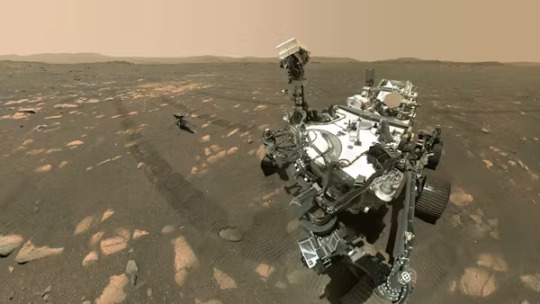
A selfie from NASA’s Perseverance Mars rover with the Ingenuity helicopter, taken with the rover’s extendable arm on April 6, 2021. NASA/JPL-Caltech/MSSS
Calling the red planet home?
Colonizing Mars has a seductive appeal. It’s hard not to cheer for the indomitable human spirit while watching Watney battle dust storms, oxygen shortages and food scarcity over 140 million miles from rescue.
Much of the momentum toward colonizing Mars is now tied to SpaceX and its CEO Elon Musk, whose stated mission to make humanity a “multi-planetary species” has become a sort of rallying cry. But while Mars colonization is romantic on paper, it is extremely difficult to actually carry out, and many critics have questioned the viability of a Mars habitation as a refuge far from Earth.
Now, with NASA potentially facing a nearly 50% reduction to its science budget, the U.S. risks dissolving its planetary science and robotic operations portfolio altogether, including sample return.
Nonetheless, President Donald Trump and Musk have pushed for human space exploration to somehow continue to progress, despite those proposed cuts – effectively sidelining the robotic, science-driven programs that have underpinned all of Mars exploration to date.
Yet, it is these programs that have yielded humanity’s richest insights into the red planet and given both scientists and storytellers like Andy Weir the foundation to imagine what it must be like to stand on Mars’ surface at all.
#science#space#science news#technology#NASA#Mars#science fiction#planetary science#curiosity rover#perserverance#The Martian#Andy Weir#Youtube
18 notes
·
View notes
Text
I don't have a logical reason for it but the quotes "Tell the emperor that my hall has fallen. Apollo no longer has his house, nor his mantic bay, nor his prophetic spring; the water has gone quite." And "My battery is low and it's getting dark" have the same energy to them. Perhaps on occasion, the machine and divine can speak the same poetry.
#196#my thougts#paganism#pagan#apollo#appollo#roman mythology#roman empire#oracle#space exploration#space travel#mars#mars rover#curiosity rover
111 notes
·
View notes
Text
Currently in the twelfth year of its mission, NASA's Curiosity rover continues to press on while treading the world of Mars, delving into areas no rover has gone before. The latest phase of Curiosity's adventure has brought it to what some scientists believe is the desiccated bed of an ancient river. As Curiosity prepares to follow Gediz Vallis, as scientists call this winding and boulder-choked channel, it will try to give scientists a look back through time so they can discover how the landform came to be in the first place
Continue Reading.
64 notes
·
View notes
Text

Possible lava flow on Mars seen by curiosity rover on SOL 4137
55 notes
·
View notes
Text

962 notes
·
View notes
Text
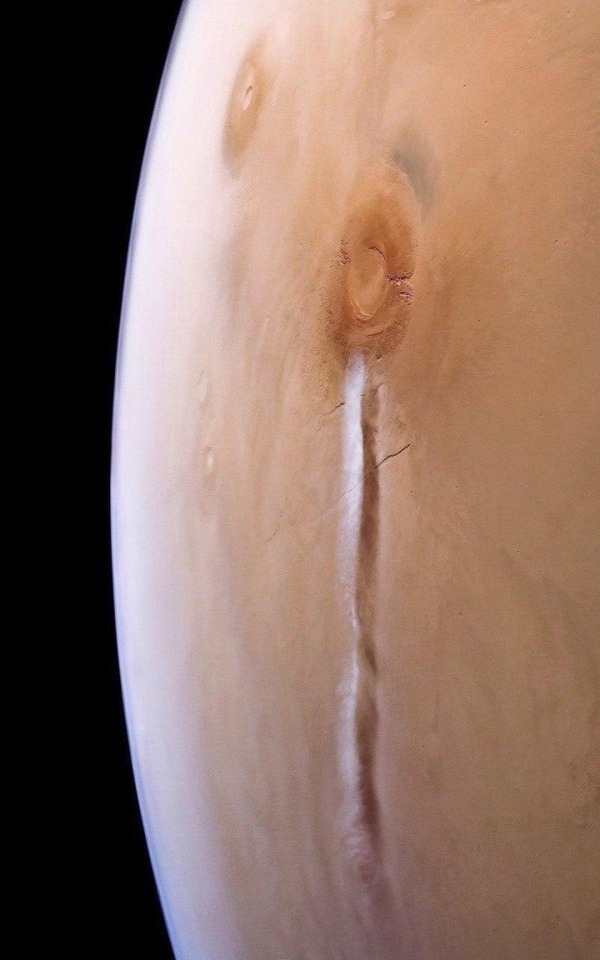
A 1500 Kilometer long lonely clouds spotted on Mars.
#mars planet#mars#planet mars#clouds#cloud photography#astronomy#nasa#astronomers#universe#nasa photos#astrophotography#astrophysics#outer space#nasawebb#hubble space telescope#space travel#space program#international space station#spaceship#telescope#curiosity rover#planets#solar system#our universe#space science#space exploration#space#nasa science#science facts#planetary science
194 notes
·
View notes
Text

who gave mars permission to be this pretty
picture taken by the curiosity rover's mast camera on martian solar day (sol) 4264 of its mission, in a valley on the vast wind-carved slopes of the 5.5 km tall mount sharp in gale crater. the rover is currently exploring sulfate-rich sedimentary bedrock that may have formed as the climate that allowed a lake to exist here over 3 billion years ago was drying out
this view is looking to the southeast and upslope toward dark sand and light-colored bedrock sculpted into rugged ridges by wind erosion. those distant rocks are much younger than the foreground rocks the rover is sitting on. they may belong to the medusa fossae formation, a geologic unit that covers vast swaths of this region of mars and that may have formed by deposition of airborne dust or volcanic ash - scientists still aren't sure because these rocks have never been seen up close on the surface
alas, some mysteries must remain mysteries for now, as the long drive to those rocks is far too treacherous for the aged curiosity rover, more than 12 years and 34 kilometers (and counting!) of driving over rocky terrain already having made swiss cheese of its wheels. but those wheels will keep on turning towards more accessible scientific priorities, hopefully for years to come
but i think it'll be hard to beat this view, the way those spires and ridges of rock catch the light on the sandblasted face of this mountain. though curiosity has surprised me again and again, so we'll see what other wonders await
8 notes
·
View notes
Text
Look at all these dudes :)
sojourner (hes dead lol)

Spirit and opportunity (may they rest in peace 😔)

Curiosity (he's just vibeing up there :D)

And Percy (say hi to Percy!)

60 notes
·
View notes